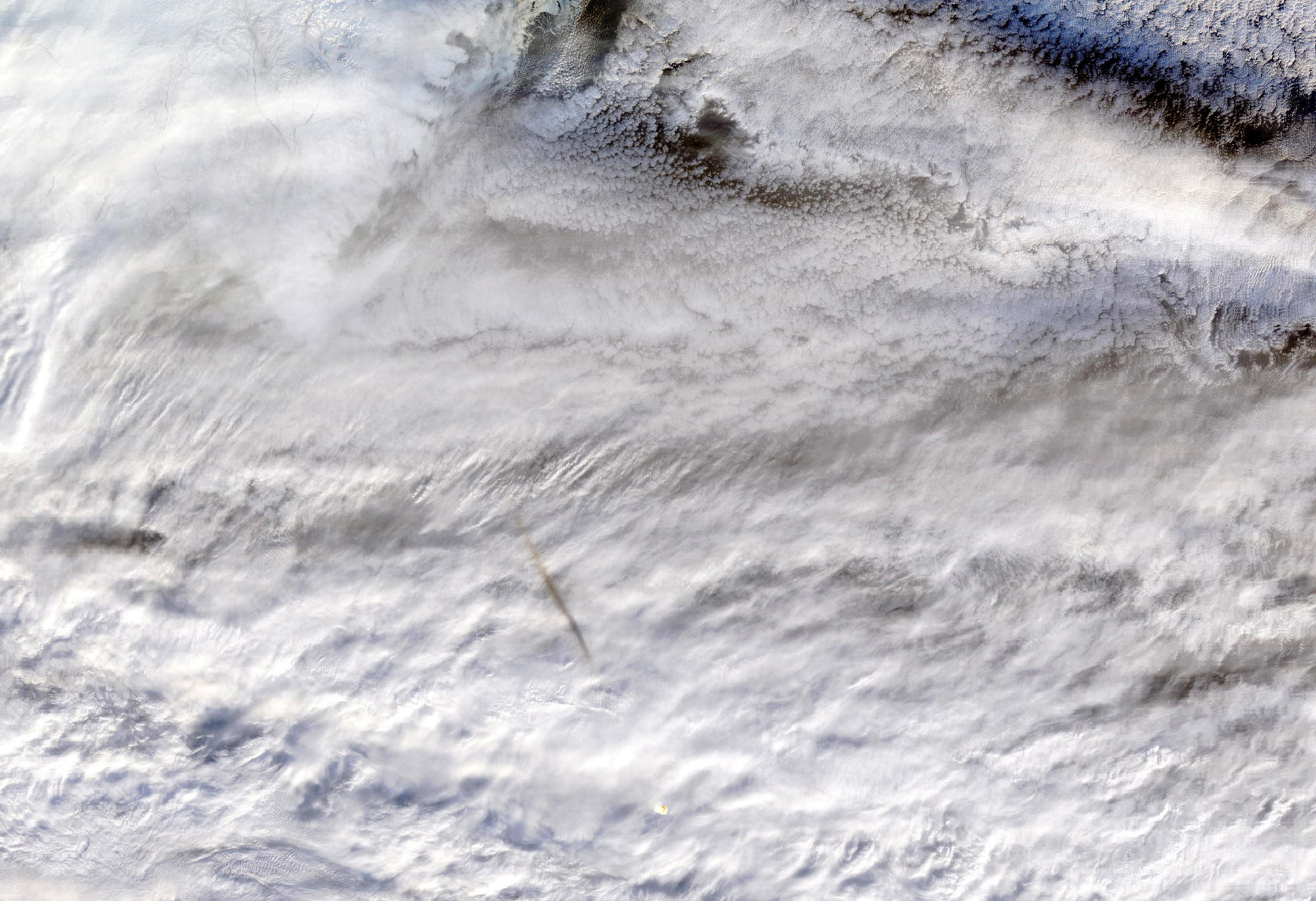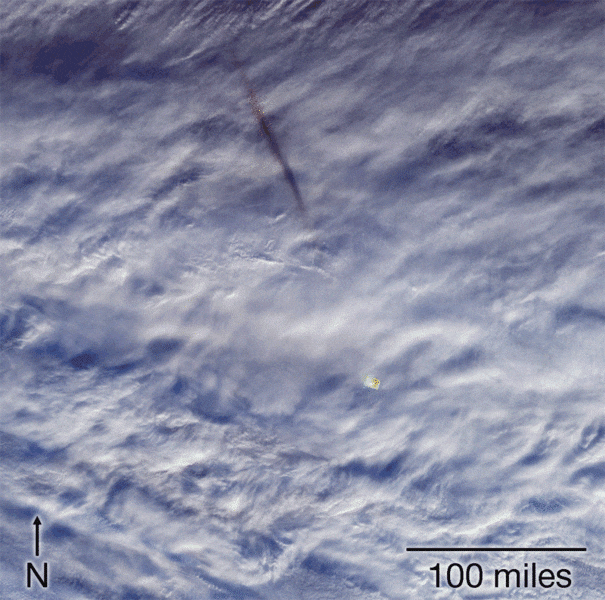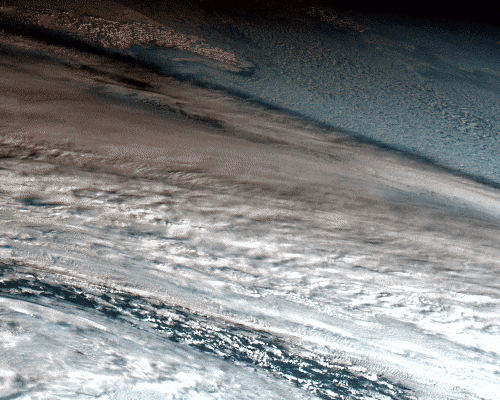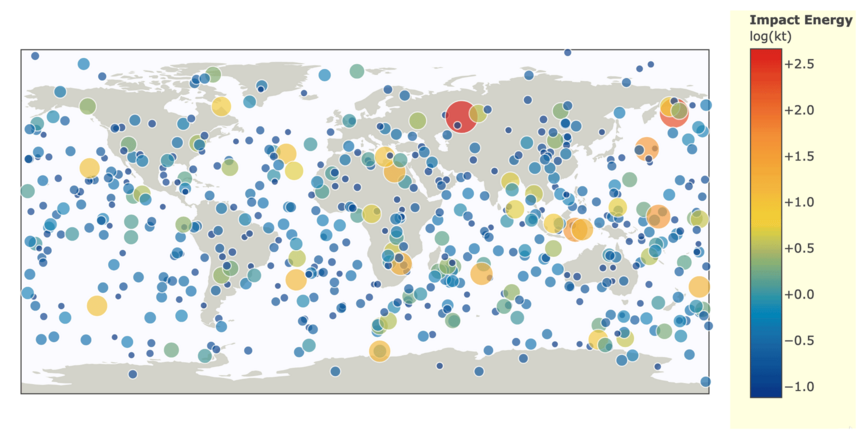Create a free profile to get unlimited access to exclusive videos, sweepstakes, and more!
The largest asteroid impact since Chelyabinsk exploded harmlessly over Bering Sea

On December 18, 2018, at 23:48:20 UTC, an asteroid entered Earth’s atmosphere above the Bering Sea, just east of the Kamchatka Peninsula. It wasn’t terribly big, but, since it was moving at a staggering 32 kilometers per second — about 115,000 kilometers per hour — its energy of motion (what scientists call its kinetic energy) was quite respectable.
Compressing the air ahead of it violently, it slowed its velocity rapidly, starting to convert its energy of motion into heat and light. It became a fireball, or more technically a bolide, an extremely bright meteor. The enormous air pressure ahead of it applied a tremendous force on the rock, causing it to deform, flatten, then break apart. Each smaller piece was subjected to the same forces, also breaking apart … and each time this happened there was more surface area exposed. Plunging down at a steep angle, within a few seconds it disintegrated, and all that energy very suddenly was converted to light and heat: It exploded.
That produced a fairly big bang, releasing as much energy as about 170,000 tons of TNT — more than ten times the yield of the bomb dropped on Hiroshima at the end of World War II. It was just under 26 km above the Earth’s surface when this happened.
Had you been under it at the time you would have seen a very bright flash, and then, about a minute later, a pretty loud boom.
However, because this happened over the Bering Sea, and not many people live within direct eyesight of the event, we don’t have any eyewitness accounts.
But we do have satellites! Both NASA’s Terra and the Japanese Himawari-8 Earth-observing satellites caught the explosion in their cameras, and sent very dramatic images back to the ground.
That animation is from Terra, starting at 23:55 UTC, about 7 minutes after the event. You can see the fireball, the superheated gas from the explosion, to the lower right. That dark streak to the upper left is not the vapor trail from the fireball (the “smoke cloud” of vaporized rock left behind), but its shadow on the cloud tops far below it. The steep angle of the asteroid’s trajectory makes the actual vapor trail hard to see in this shot. The fireball and shadow seem to move relative to each other from frame to frame, but that’s actually due to the changing vantage point of the satellite as it orbits the Earth.
A different detector on Terra captured this more natural-color image:
Again, Terra is in low-Earth orbit, so the scenery changes rapidly. Japan’s Himawari-8 is a weather satellite, however, and is in a geostationary orbit, nearly 36,000 km above Earth’s equator. The event looks smaller from that distance, but the Earth’s apparent motion under it isn’t as rapid, so the view is steadier:
This one took me a moment to understand. It looks like the vapor trail disintegrates, but again that’s actually the shadow of the trail, and it gets diffuse as the Sun gets lower, until it seems to evaporate at sunset. However, in the last frame or two (I paused the animation there before it repeats so you can see it better) you can see the actual vapor trail lit by the Sun, milky and eerie, the night side of Earth under it providing contrast. Incredible.
This was the largest asteroid impact detected since the Chelyabinsk impact over Russia in 2013, which had a yield of half a million tons of TNT. We can actually use that to estimate the size of the Bering Sea asteroid. It had about 1/3 the explosive energy of Chelyabinsk. You might think that means it was 1/3 the size, but in fact velocity plays a bigger role here; the kinetic energy scales as the mass of the asteroid times the square of its velocity. The Bering Sea asteroid was moving twice as rapidly as Chelyabinsk’s; factoring that in gets a size for the Bering Sea impactor of about 10 meters across. Roughly the size of a small house.
Impacts like this are relatively rare, occurring perhaps once every year. The bigger the impact the more rare it is; Chelyabinsk-type explosions happen roughly every 40 years or so, but this is statistical; any given one can happen sooner or later than that. In fact these numbers are pretty rough, as different methods for detection (telescopic observations, for example, versus infrasound microphones that can detect them from hundreds or thousands of kilometers away) give different rates. To my knowledge this tension between the methods hasn’t been resolved yet.
The point here is that, well, these things happen. Asteroids this small are unlikely to do much damage, since most blow up high over the Earth’s surface. Also, the Earth’s surface is 70% ocean, and even most land area isn’t occupied. That’s why footage of them is rare, and you haven’t heard much about asteroid impacts like this killing people or damaging property.
Chelyabinsk, on the other hand, was a bigger explosion and did happen over a major city. The shock wave from the event shattered windows in buildings, and over a thousand people were injured by flying glass.
There are a lot of factors that change the impact energy and surface damage. If the asteroid is metal it can penetrate our atmosphere deeper (Chelyabinsk was rock and riddled with cracks and fissures, so it disintegrated easily). If it comes in steeper the energy release is more concentrated, and can do more damage. Velocity is a huge factor. And on and on.
So the good news is that we can go for long periods of time between impacts that can actually do us harm. The bad news is that there’s not much we can do about them. Small impactors (say, less than 50 meters across) are difficult to see, so we don’t know one will hit until it does hit (and ones that miss us are generally not seen until after they pass us).
My hope is that as bigger telescopes come online we’ll be able to see smaller potentially hazardous asteroids, and have more warning time should one be headed our way. The good news there is the bigger they are (and they more they can harm us) the farther in advance we can see them, because they’re brighter. So hopefully if something bigger than Chelyabinsk — say, something 20 to 50 meters across, like the ones that hit in Tunguska in 1908 or Meteor Crater in Arizona 50,000 years ago — we’ll have plenty of warning.


















